A Short Essay (With Lots of Pictures)
on the Making of a Book:
Philip C. Stead & Hello, My Name Is Ruby
 September 5th, 2013 by jules
September 5th, 2013 by jules
Philip C. Stead, pictured here in one very cozy-looking hat, is visiting 7-Imp this morning to talk about the creation of his newest picture book, Hello, My Name Is Ruby, a Neal Porter/Roaring Press Book, released just this week.
 The first time I read this story was at the book-saturated ALA convention (back in June). I rather devoured it. I put it aside. That was that for the time being. I knew I’d revisit it, but it took me a while. Once I finally did pick it back up, I read. And re-read. And re-read again. Slowly this time. And each time I saw something new, and each time I appreciated it in a deeper way, because this is not a book to read fast. It’s a book that nearly beckons you to sit with it and linger, and to be sure, this is something I love about picture books — how they ask me to slow down.
The first time I read this story was at the book-saturated ALA convention (back in June). I rather devoured it. I put it aside. That was that for the time being. I knew I’d revisit it, but it took me a while. Once I finally did pick it back up, I read. And re-read. And re-read again. Slowly this time. And each time I saw something new, and each time I appreciated it in a deeper way, because this is not a book to read fast. It’s a book that nearly beckons you to sit with it and linger, and to be sure, this is something I love about picture books — how they ask me to slow down.
Another experience I’ve had with this book, though I don’t tend to go on and on here at 7-Imp about my own children’s responses to books (humor me while I do now for a moment): My daughters happened to fall for this one. We’ve read it repeatedly, and the youngest is still, months later, talking about, wondering about, asking about the peacock in the story. This is a book about friendship and introverts and Being Brave and Asking to Be Friends Even When You Might Feel Scared, and Ruby, the small feathered protagonist, is shunned one day by a peacock. The peacock says, “No, thank you” when Ruby asks if they can be friends. “Was that necessarily rude?” wondered my seven-year-old aloud weeks after first reading it. I mean, the peacock turns Ruby down with polite words, she’s noted, and there could be any number of reasons the peacock didn’t want a friend that day. It’s engendered many a discussion around here about intentions and emotions and how one’s words and actions can make someone feel as down as Ruby does in the wonderful rain spread you’ll see below. (I’m eager to read this one to a group of children, the first chance I get.)
I like picture books that get children (and me) to think that long and that hard. And I also like picture books that get children thinking about empathy — not from some forced lesson (shudder) in the story itself, but thoughts about compassion or kindness that spring from a solid tale. (Good authors, the great Katherine Paterson once said, do not set out to teach virtue so much as they set out to tell a story, though along the way we may learn a little bit about what it means to be a human on this planet. Or, well, a yellow bird named Ruby, who isn’t actually ruby-colored.)
Now, here’s the thing about Phil Stead — to give credit where credit is due. When he and I discuss him visiting 7-Imp, he sends me these fully-formed pieces on the creation of his books. (See: Last year’s, or even 2011’s.) I can take no credit here. If I ask someone to visit this site, I’m willing, needless to say, to do my part and send questions and suggest ideas for a post and such—that’s what a good hostess does, right?—but Phil has already thought it through, has already been inspired, already hatched a good plan, and what he sends me is, I think, always interesting to read.
So, I thank him. And let’s get to it.
Philip: Okay, here we go.
Hello, My Name is Ruby is the simplest book I’ve ever made.
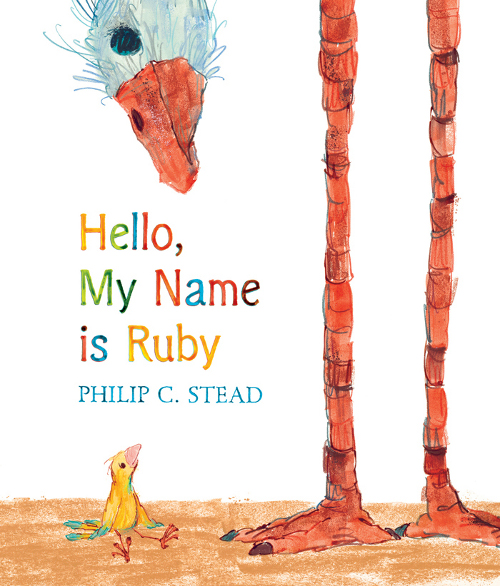
Ironically, it evolved out of the most complicated picture book text I’ve ever worked on — and, thankfully, never made. Hello, My Name Is Ruby in its present form is a straightforward text about Ruby, a little yellow bird who explores the broad world, looking to make friends. Sometimes she is successful, and sometimes she is not. It is my shortest text yet, and, I hope, one of my most honest. But before Hello, My Name Is Ruby came a much more complicated text — The Book of Birds.
The Book of Birds was the story of a near maniacal ornithologist who was scouring the world for an ultra-rare species of bird. Along the way, he discovered many other equally rare birds, but in his mania he could not see these other birds for their beauty. Accompanying the ornithologist on his quest was his humble pet, Ruby, a little yellow bird. Ruby was unfailingly polite to the array of birds that she and the ornithologist happened to meet. The Book of Birds was a weird, somewhat dark story. At the time “weird” and “somewhat dark” is exactly what felt right. But The Book of Birds quickly became unwieldy. I worked for weeks and weeks, carrying legal pads with me everywhere I went, making notes on dialogue and plot. It grew and grew into a tangled mess.
I began to despair that the story was going nowhere. My despair did not go unnoted:
So, I did what I do when I’m stuck: I read books. Sometimes this can be inspiring. But, just as likely, it can be humbling. In this case, it was both. Pulling books from our home library, I became fixated on a book that I’d never given much attention to — I am a Bunny by Ole Risom and illustrated by Richard Scarry.
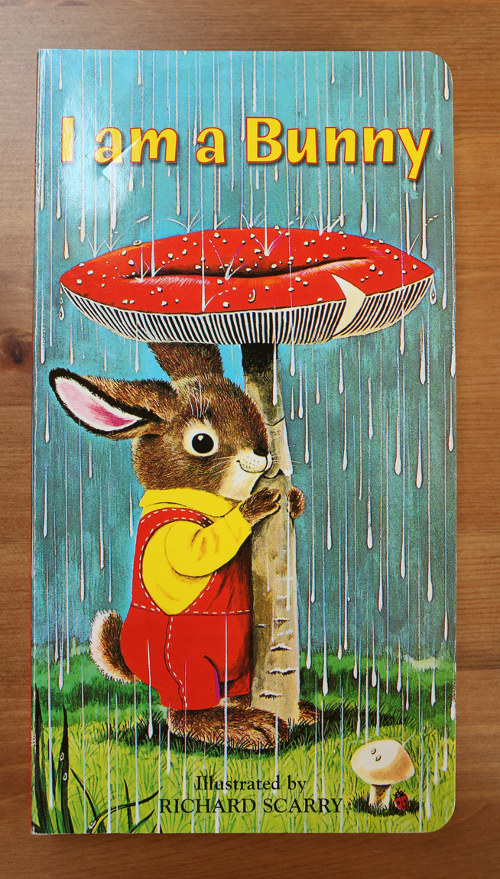
Yikes. I knew I was in trouble. Reading Risom’s text, paired with Scarry’s artwork, it became clear to me that I was building a monster. I am a Bunny was so simple, direct, perfect — the complete spiritual opposite of my Book of Birds. It was barely 100 words long, yet the world felt so complete and whole, full of atmosphere and life. In short, it had a beating heart. In contrast, my story was stiff, lifeless.
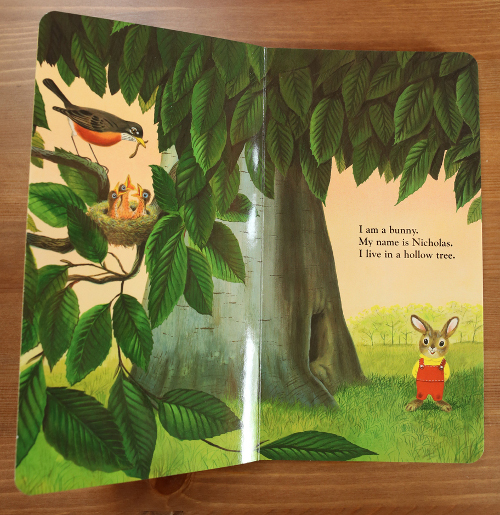
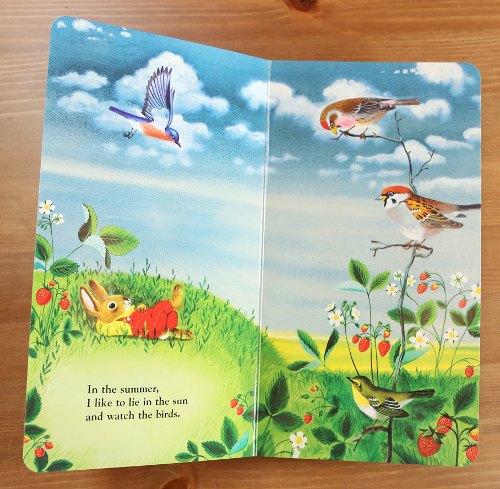
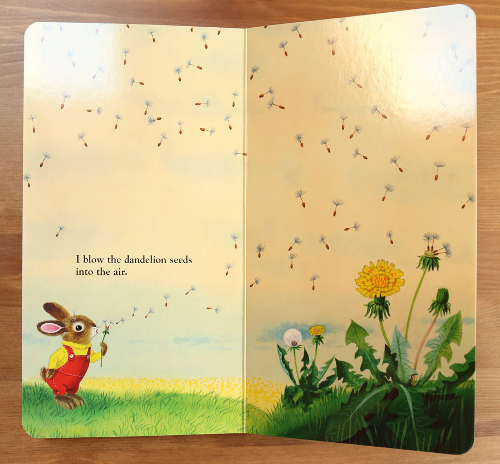
These are the times when it’s helpful to have another bookmaker in the house. I turned to my wife, Erin, and said something like: I think my story is terrible.
Erin: Yeah, it might be.
Me: No, my story is DEFINITELY terrible.
Erin: Yeah, it is.
Me: I hate myself. I am terrible at my job.
Erin: Perhaps.
Me: The only parts I like are the little moments where Ruby introduces herself to the other birds. I like those parts.
Erin: Yeah, those parts are nice.
Me: [Silently disgusted with myself, wishing I was Ole Risom and/or Richard Scarry.]
Erin: So, why don’t you delete everything except those parts?
Me: Oh, well, um, okay.
And thus a book was conceived.
I deleted everything, except for the short, little moments of dialogue between Ruby and the unusual birds she meets. The story was instantly a million pounds lighter. Suddenly, bookmaking was fun again. I got right to work in my sketchbook.
I got to know the characters a little better…
I experimented with different art materials just for fun…

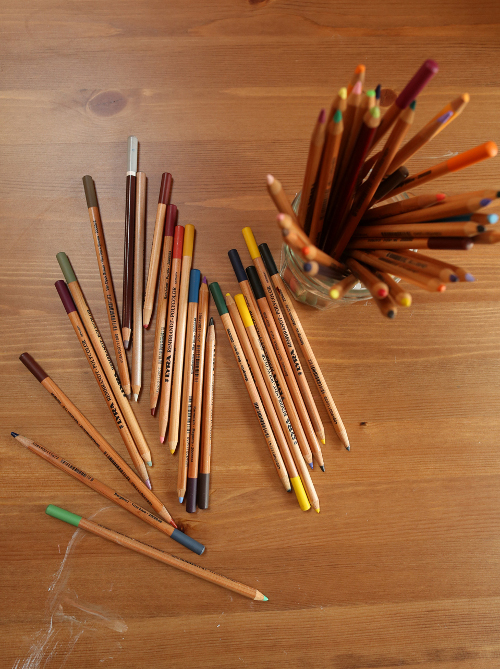
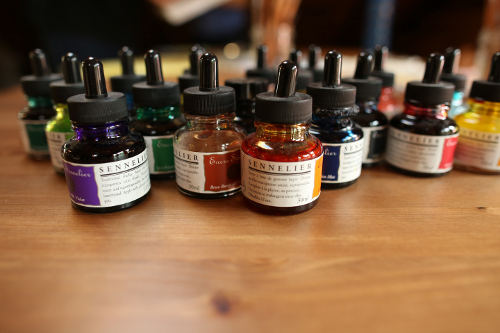

I looked for interesting source material…

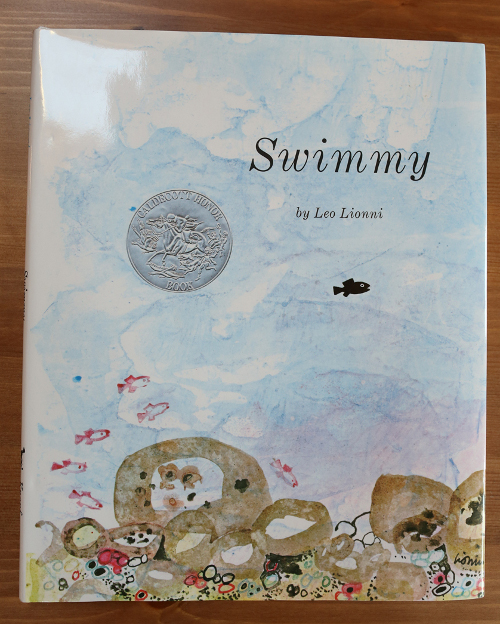
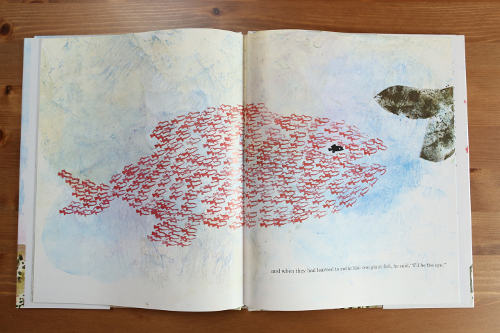

I dummied out the pages for the book:
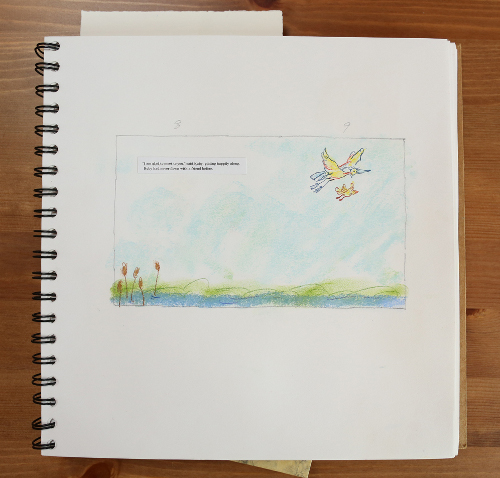

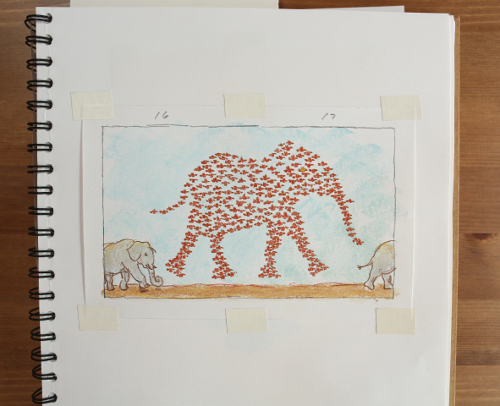
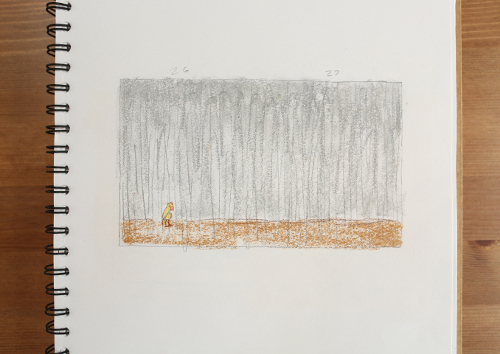
I imagined a color palette…

And I thought about typography…
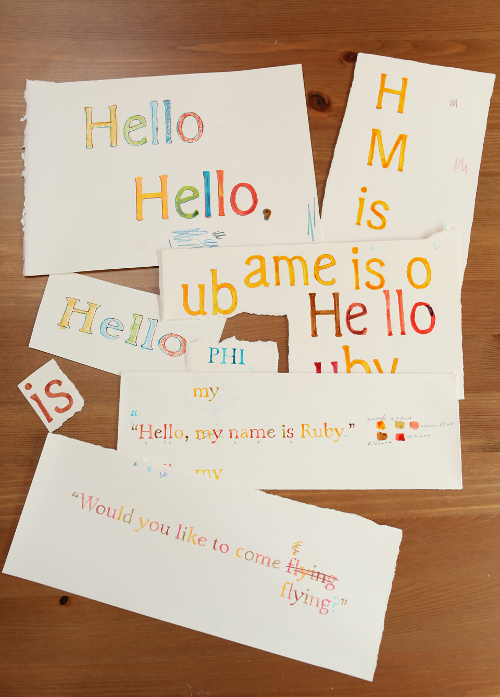


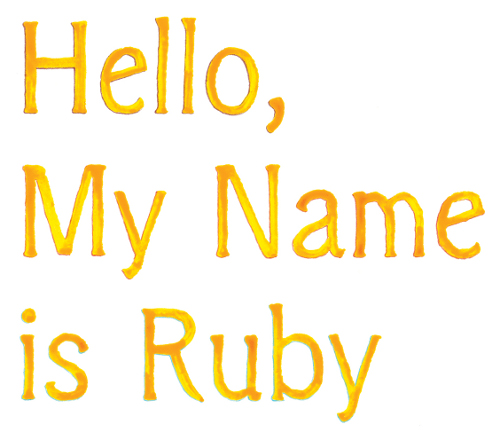
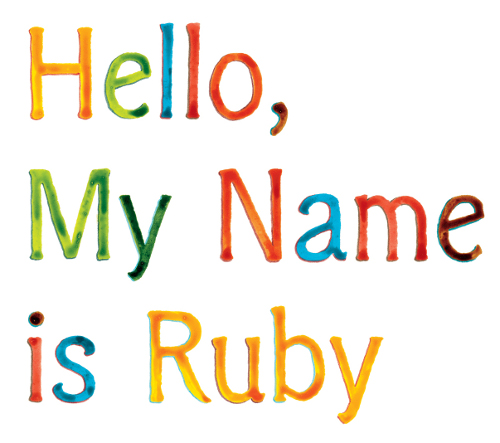
Typically, I sketch a book out, make a big mess, and then after I’m finished I get to work deciding what the final art style will be. I tend to make this part of the process extremely complicated. It’s scary to work simply. The simpler the style, the trickier it is for an artist to hide behind Flash and Whizz-Bang. You’re just out there, vulnerable. I’ve tended in the past to keep things as complicated and full of tricks as possible. It’s just easier to hide your flaws that way.
But a strange thing happened when I finished the Ruby dummy. I was showing the sketches to my editor, Neal Porter, and he asked: So, what is this book gonna look like?
Me: [Sighing.] I don’t know. I like these sketches. I’m worried if I get tricky, I’m gonna ruin them.
Neal: How’re they made?
Me: Just some stuff I was messing around with — chalk pastel, colored pencil, some colored ink.
Neal: So, why don’t you just do that, but bigger?
Me: Oh, well, um, okay.
The pastels were so dusty and light that a strong wind would practically blow them off the page. In many ways, it was the perfect medium for a book about flight.
‘Hello,’ said the bird standing in the cool water.
‘Today is a very nice day,’ said Ruby. She looked up at the blue sky.
‘Would you like to come flying?’ asked the bird.”
(Click to enlarge spread)
It turned out to be perfect for another, more personal reason as well. It takes me a very long time to make a book, usually about a year. A lot can happen in a year. During the year of Ruby, there were a lot of heavy things going on in my life. I had multiple family members in and out of the hospital. There were surgeries, and cancer treatments, and all sorts of the kind of nonsense that life can inflict.
Sidenote: I’ve decided that “chemo” is the ugliest word in the English language. The word “chemo” is a joy vacuum. But anyway…
Right when I’d intended to sit down and really make a book, I found myself spending less time at my desk and more time getting to know the health care system of the Greater Metro Detroit Area, a very different sort of world than the land of make-believe that I typically inhabit. It felt too heavy in that world for art. But, of course, that’s exactly what art is for. Amidst all the heaviness, it was such a relief to sit down and step into the light, airy world of Ruby. Because the final art was really just a scaled-up version of my sketchbook drawings, I could work very quickly. Unlike other books I’d made in the past, I could sit down with a blank page and by the end of the day I’d have a finished piece of art.
‘There are so many things to see!’ said Ruby.”
(Click to enlarge spread)
(Click to enlarge)
(Click to enlarge)
(Click to enlarge)
Although all of my books are personal in some way, there are ways in which this book is my most personal. I made this book for me, first because I wanted to, and then because I needed to. Now that Ruby is entering the real world, I hope she’s able to make even more new friends. And I hope she helps someone, young or old, feel a little bit lighter in their shoes, like she did for me.

Thanks.
Your Friend,
Phil

P.S. Why name a yellow bird “Ruby”?
P.P.S. I’m not telling.
Jules here. Thanks again to Phil.
Wanna see an art demo?
HELLO, MY NAME IS RUBY. Copyright © 2013 by Philip C. Stead. Published by Neal Porter/Roaring Press Books, New York.
All images here are used with permission of Philip C. Stead.


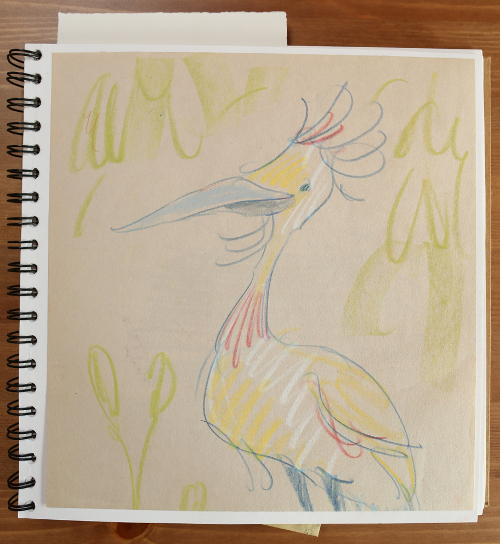
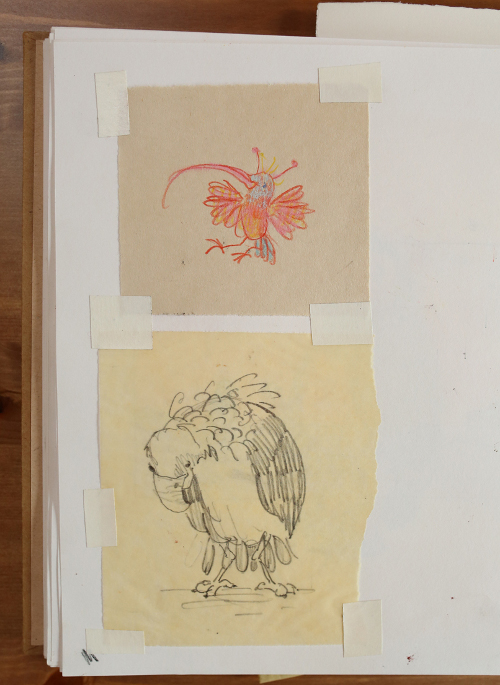


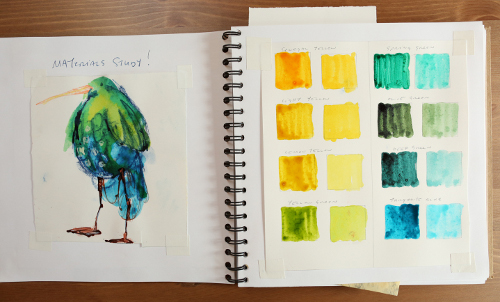
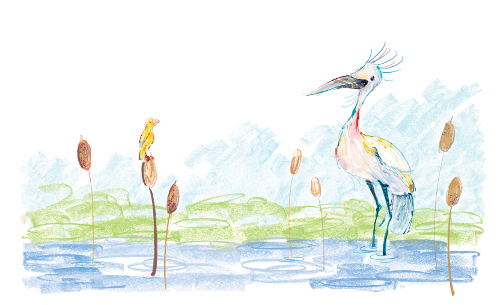
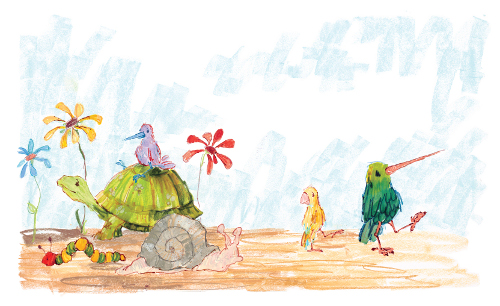
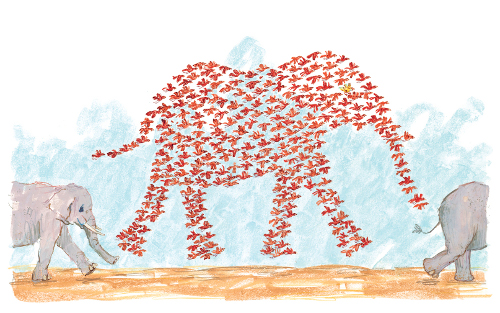
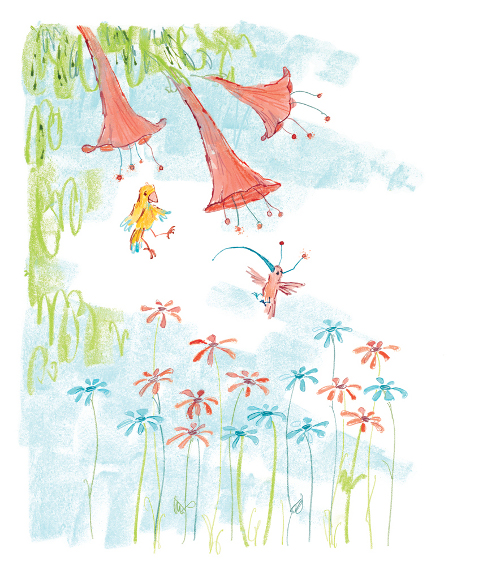

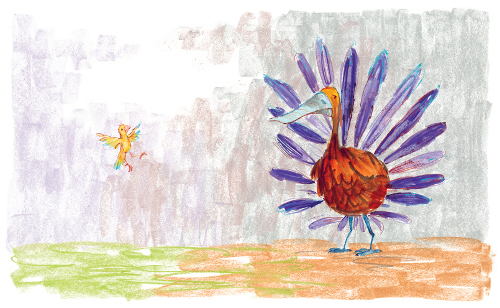
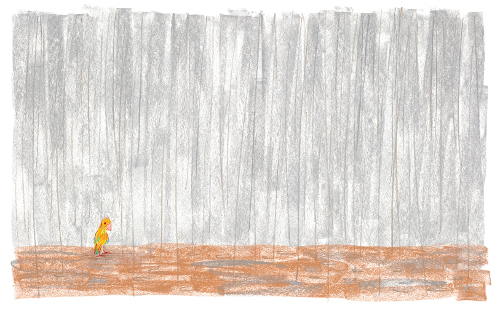

The artwork is beautiful and the post – made me all teary. Thanks for sharing. We all have hard things to get through and it’s nice to know how others go about it…and create something wonderful in the meantime.
Phil (and Jules)– Thanks for this. Just what I needed!
How wonderful! It is one of my biggest joys to see the process of an artist. Thank you!
It was inspiring to get a glimpse of Phil’s artistic dilemmas and learn how he made his choices when creating his book. And thanks, Jules, for this blog, which I visit frequently.
“…I hope she helps someone, young or old, feel a little bit lighter in their shoes, like she did for me.”
*teary eyes*
And, that’s what will make this book PERFECT.
I cannot WAIT for it. This is truly beautiful. Thanks, Phil, for putting out there that struggle, of art against the dark.
Ah, whenever I visit your blog, Jules, I know I’m in for a treat. Today was an exceptionally delightful one. I always find it reassuring to hear about others’ struggles with creating picture books (not that I take pleasure in others’ struggles, mind you). A HOME FOR BIRD is one of my favorite PBs, so I can’t wait to read this one. Congratulations, Phil, and thank you both!
What a wonderful interview– thank you to both of you for sharing so openly– the process is wonderful. I have the book on hold at my local independent bookstore– can’t wait to go and pick it up!
OH! And the book, “I am a Bunny” was my 2 kids favorite book ever when they were very little. We read it over and over and over– its simplicity entered our hearts and minds deeply.
This is by far the best post I think I’ve ever read here! Thank you so much for sharing Philip and Jules…I felt like you were speaking directly to me the entire time and the video was incredible as well.
There was so much I loved about the story of how this book came into being….very inspiring! And the art demo was riveting!!!
I feel lighter in my shoes just from reading this post. I love the pictures (color swatches! sketchbook! inks!) I can’t wait to read Ruby. Congrats Phil, and thank you, Jules.
[…] You can read so much more about the book and how it was made by visiting Seven Impossible Things Before Breakfast. […]
Loved this–inspirational! I cannot wait to read this beautiful book!
Thanks for a wonderful post about Phillip Stead’s new book! As a teacher and future school librarian I can’t wait to read this book to primary students-it would be a wonderful book to use to talk about how we make friends. Love the simple and whimsical art.
What a beautiful story and book. My son and his family will enjoy it, also. Thank you for sharing some of the background for this story. All of your books are wonderful! They show a sensitivity to life that is special.
Wow, there were so many insights in this post. Struggling with a story, learning to let go, finding a character, and all while going through what life deals to you… Thanks for sharing. And I like that Ruby is a yellow bird.
What a fantastic and inspirational post. Loved all the process pics and insights (from both Jules and Phil) on what makes a good picture book. Thank you so much for sharing.
GREAT post!!!! I’m a huge Philip Stead fan and cannot wait to get my hands on this book. 🙂
[…] illustrations were done with chalk pastels, colored pencils, and colored ink. On the Seven Impossible Things Before Breakfast blog, Philip Stead shares his artist process with adults who love picture books, like me. If you take […]
[…] in Nashville. I’ve gone to see what sessions I could, and I had the pleasure of introducing Philip and Erin Stead at their Saturday session. Their session was one of those that made me want to stand […]
[…] that I saw it in an all-new light. Here in Nashville, we celebrated the Southern Festival of Books. Philip and Erin Stead gave a great talk on Saturday, and Philip spoke lovingly at one point about this […]
[…] an ounce of artistic talent–I just think there isn’t a more perfect job. Read Stead’s interview at 7 Impossible Things Before Breakfast and/or watch this short video trailer to see what I […]
There is nothing more inspirational than hearing about the creative process. Whenever I’m stuck I either listen to new music, go to the library for unfamiliar books, or read about/watch someone else creating. It always restarts my imagination.
[…] or something. I think your collaborations with Erin and also, like, A Home for Bird and Ruby naturally came to mind. More earnest stuff. Although, maybe it was your art and Erin’s art […]
[…] about picture books. I moderated, and weighing in with great responses were: R. Gregory Christie, Phil Stead, Erin Stead, Laura Vaccaro Seeger, and Dan Santat. […]
[…] of this field’s best illustrators. (And Special Delivery, illustrated by Matt and written by Phil Stead, is one of my top-five favorite picture books from this year.) He and I had a relaxed […]
Hi Philip!
I’m writing to you because I work as a head in a KG in Buenos Aires Argentina.
We read your book cause we are working with values and now we are working with gratitude and we found your book Un Día Diferente Para El Señor Amos is special for that.
Is there any information about the time you wrote the story you can share as you did with other stories in your blog?
The illustration is really something else!!!!!It transmits so much that you can feel his gratitude as animals arrive at his place!Every detail has been so well thought of!
We would be very grateful if you do not have information about the book as from others,do you think is it possible to embed a Hi by mp4 for k4 children from Chaltel Kindergarten they will be delighted if you do not know any spanish do not worry I can translate it for them.
One last question is there any metaphor in the red balloon I wonder. Anyway I promise to send you pictures of what children develop around you book
yours sincerely
Edith Dalla Fontana